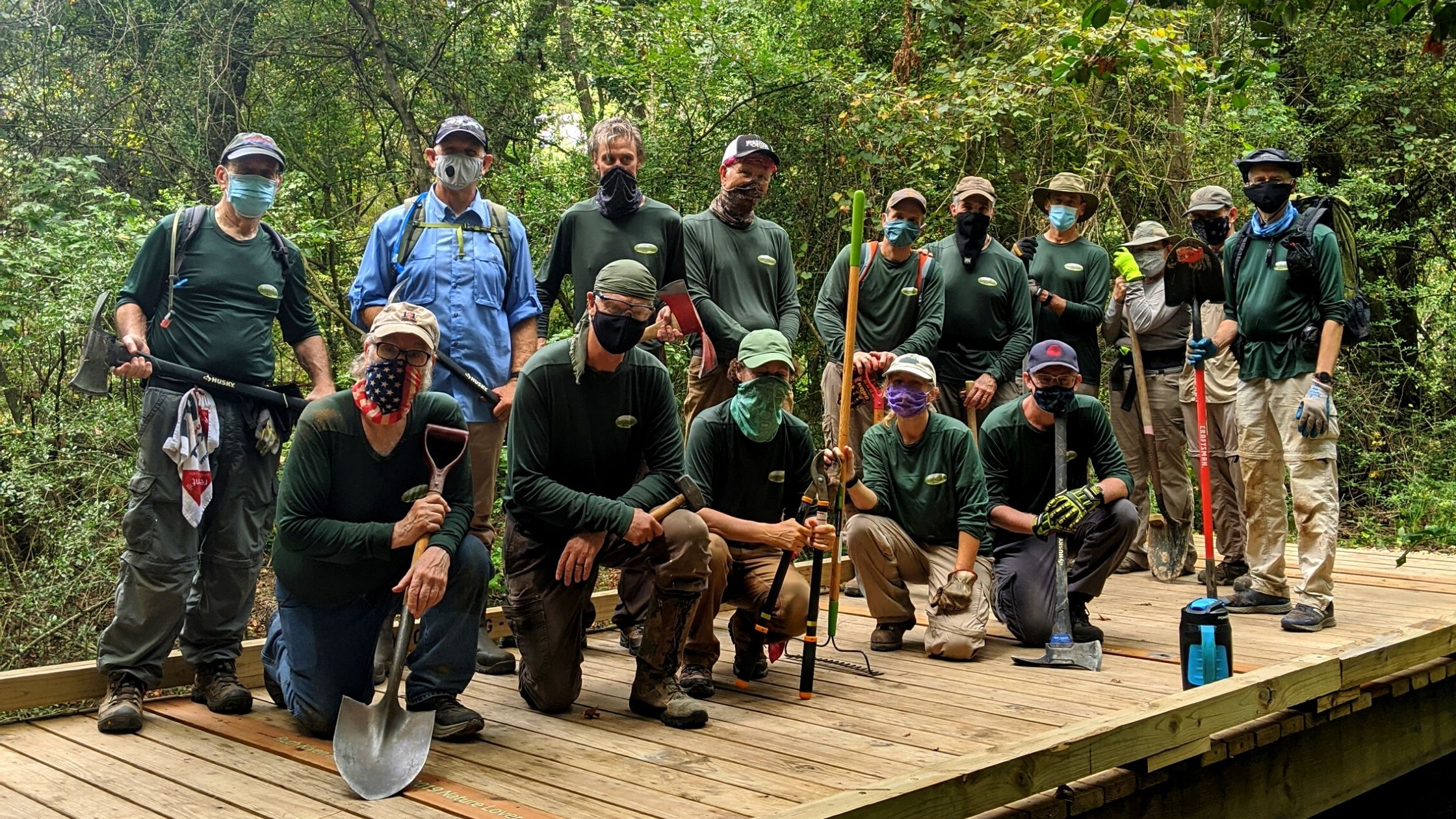Located in Houston, Bayou Land Conservancy works to protect and restore many natural lands, streams, and wildlife in the area. If you have ever had the pleasure of visiting the Spring Creek Nature Trail, Spring Creek Greenway, Montgomery County Preserve, Little Cypress Creek Preserve, or Lake Creek Preserve, then you know the beauty and value of their work. In addition to lands open to the public, they also manage properties that are undergoing restoration such as the Ashton Gardens Preserve.
Bayou Land Conservancy has been focused on protecting flood plains, streams, and the surrounding lands since 1996 and was spearheaded by the well-known local environmentalist, Terry Hershey. Since then, the organization has protected 14,187 acres at 63 preserves.
Today we sit with Jill Boullion, Executive Director, to find out more about Bayou Land Conservancy.
What is the biggest difference between the Bayou Land Conservation’s goals in 1996 compared to today?
We’re a much more strategic organization now with a defined conservation area (the Lake Houston watershed). There are now four accredited land trusts in the Houston region and we each have our geographic area of concern and our strategies for land conservation.
But, in 25 years we’ve also become a more collaborative organization. Land conservation is easier when you have partners!
Who was Terry Hershey and what can we learn from her legacy?
Terry Hershey became an activist for the environment in the 1960’s when the US Army Corps of Engineers announced plans to line Buffalo Bayou with concrete. She not only mobilized the community, she engaged Congressman George HW Bush and successfully stopped that project.
From that effort she founded the Bayou Preservation Association and in the mid-1990’s Bayou Preservation Association started a land conservation committee which spun off to become Bayou Land Conservancy.
I think there is a lot to learn from Terry Hershey because she was persistent and persuasive. She enlarged the circle and brought others to the cause. Her passion was contagious and we have her to thank for many of the environmental organizations who work in Houston today.
After more than 25 years, is land, water, and wildlife preservation getting any easier? How have extreme weather events affected your work? And are there other factors that contribute to the need for more preservation work?
The awareness of the need to preserve our floodplains in the Houston region was certainly raised by Hurricane Harvey, but it’s not getting any easier.
We are competing against the fast pace of development in the region and hindered by the lack of public funding for land conservation in Texas. Other states put many more resources into the public good of land conservation than we do in Texas. The public is very, very supportive of land conservation, but policy makers, both locally and statewide, are lagging that public sentiment.
How does Bayou Land Conservancy serve and include the local community? What value does the public bring to your mission?
At BLC we’ve long recognized that people won’t support our mission if they are not connected to it.
We’ve taught hundreds of adults in our community about our mission and how to get involved through our Spring Creek Greenway Ambassador program. Our No Child Left Inside program connects 5th-12th graders to a hands-on, outdoor science-based experience. BLC volunteers constructed a 14-mile nature trail on Spring Creek that thousands of people use every year, and we host hundreds of hours of volunteer work projects and community programs there each year.
We’re also committed to listening to our community and ensuring that we’re not leaving anyone behind. We are a publicly supported organization and we want everyone to feel welcome, and safe, on our public preserves and the Spring Creek Nature Trail.
Bayou Land Conservancy has some lands that are open to the public, and some that are not. What goes behind that decision and what is the difference between these spaces?
The decision about whether a preserved area will be open to the public starts with the landowner.
BLC protects most of its preserves with conservation agreements that provide permanent protection, but we don’t own the land. If the landowner is a public entity (like a county or municipality) it’s more likely that the preserve will be open to the public. Private owners may decide to have limits on public access or none at all. But, even private land provides benefits to the public through flood mitigation, clean water, and wildlife habitat.
What is something you wish the public knew about your organization, your work, or land and water conservation in general?
Conservation agreements are voluntary! All our landowners are protecting their land because they love it and see the value in preserving it.
Also, even if you never step foot on one of our protected sites, you can still benefit. Protected land provides many economic and social benefits, such as flood protection, cleaner water, wildlife habitat protection, and places for people to recreate. Our community is healthier because of land conservation!
Besides land conservation and community programs, are there any other core programs for Bayou Land Conservancy?
Yes, advocacy is a high priority for BLC.
We collaborate with others to encourage responsible land conservation and the benefits it provides the community. Our policy efforts span the range from very local, to statewide, and federal. There are more than 30 land trusts in Texas and more than 1,200 in the country, and we all work together to educate our policymakers about the importance and benefits of land conservation.


